I am in the FFF filament based printers industry for quite some time, almost 10 years since I started to play with RepRaps and later joined the project as a core developer. That is more than ⅓ of my life and if I think about it like this I get butterflies in my stomach. Over that time I gained an incredible amount of experience and built a huge team of 320 people working with me in Prusa Research. With this in mind, I got an itch last year: it would be a shame not to use our experience in additional projects. First was the filament. Oh… sorry, Prusament 😉 which we launched just two days ago to an incredible response. Quite frankly, I will have to start looking for second building just for extra filament lines pretty soon. 😀 And today, I will show you our second project that came out of that itch, a new resin-based printer Original Prusa SL1!
To help us with this huge undertaking, earlier this year I acquired a Czech company Futur3D specializing in resin printing – and their exceptional team joined us at Prusa HQ, bringing over 5 years of experience in this field with them, so we can make the SL1 really awesome right from the start. It is also great news for the 3D printing world, because with this acquisition we will be open-sourcing all the designs starting with SL1! Resin 3D printing was always done at premium prices and by big corporations. We may not wear suits, but we have an incredible amount of new ideas and we are willing to work our asses off, which is something corporations usually lack.
But before we start talking about SL1, let’s take a brief look at the difference between FFF/FDM and SLA printers. FFF/FDM technology is based on extruding melted thermoplastics – you know them as ‘filaments’. SLA, on the other hand, is based on curing photosensitive resin into thin layers using an LCD screen and a light source. And it can reach the insane layer height of just 0.01 mm! However, the recommended values are between 0.025 and 0.1 mm.
The SL1 isn’t trying to compete with the flimsy Photon or with the ultra-pricey Form but instead I want it to be the MK3 of the resin world – have the best print quality, convenient design and features, ease of use and other things, while keep a price accessible for an everyday hobby maker.
SLA technology explained
There are three main categories of SLA processes: laser-based stereolithography (laser SLA), digital light processing stereolithography (DLP-SLA), and masked SLA (MSLA). For all these processes, a tank of photo-reactive liquid resin is selectively exposed to light in order to form very thin solid layers that stack up to create one solid object. Even though laser-based SLA, DLP-SLA, and MSLA are all types of stereolithography and utilize similar technology, they can produce significantly different outputs.
Original Prusa SL1 uses MSLA, which means that there is an LED array as it’s light source in combination with an LCD photomask to shape the light image. Like with DLP printers, the LCD photomask is digitally displayed and it is composed of square pixels. The pixel size varies based on how the LCD photomask is manufactured, and individual pixels are deactivated on the LCD to allow the LED light to pass through to form the resulting layer. Thus, the XY accuracy is fixed (it’s the physical resolution of the LCD) and it does not depend on how well you can zoom/scale the lens as is the case with DLP. And that’s the reason why MSLA is more accurate.
In the other words, let’s say that the LCD displays layer shapes as transparent images and the rest of the image (beyond the outlines of the layer) is black, so the light passes only through the transparent layer shape 🙂
Original Prusa SL1 Tech Specs
Alright, that was the boring part – now for some cool hardware specifications! The SL1 is using a 5.5’’ high-resolution LCD display with the physical resolution of 2560×1440p, resulting in 0.047mm per pixel, that’s the fixed XY resolution. A high-performance UV light will cure one layer at a time, which takes about 6 seconds and then the printing platform is lifted, so the printer can start creating another layer. This configuration gives us a maximum print area size of 120 × 68 × 150 mm (or 4.7 × 2.6 × 5.9 in.).
By the way, we are using a pretty smart design for the printer: its core is a rigid dural frame with a separate body, which greatly improves stability and reliability. To put it simply, it’s not another wobbly plastic thing. This thing is HEAVY! 🙂
As already mentioned, thanks to Trinamic drivers and rigid dural frame, the SL1 can reach a layer height of just 0.01 mm. But most users should stay within the recommended range of 0.025 – 0.1 mm per layer. And yes, we will also give you the option to enable variable layer height. And rest assured that our printer is open to third-party resins.
Original Prusa i3 MK3 was a major step forward in terms of reliability and ease of use thanks to its many sensors and smart features. I actually said that MK3 is ‘bloody smart’. And SL1 will be no different. You can expect smart features, safety mechanisms, detailed manuals and handbooks, 24/7 live support, perfectly described functions, easy maintenance and cheap spare parts… things that are usually not found in cheap Chinese 3D printers.
Tilt bed and resin level sensor
SL1 features a unique resin level sensor, which is located in the resin bed (also called ‘tank’). It helps you to pour the optimal amount of polymer into the tank and it also notifies you when the resin is running low and needs a refill This prevents the situation when you would run out of resin mid-print. Also, even in case you decide to ignore the sensor and pour too much liquid into the tank, there is a special membrane protecting the electronics, so the insides of your printer will stay safe. This is a pretty unique feature which will save you a lot of prints and makes resin printing sooo much easier!
Speaking of the resin tank, it’s another major feature of this printer. What we have here is a removable tank with a flexible transparent FEP film on the bottom. Right underneath it is the LCD display (cooled to improve its lifetime) and the UV light. So, first of all, the resin tank has a motorized tilt function, which means that after curing a single layer, the print is not lifted vertically from the bottom of the tank. Instead, the tank tilts – This is huge, it drastically improves the surface finish of the models and reduces the stress on the model which is less likely to detach from the base. We can do this thanks to our extremely rigid aluminum build of the printer. If the core would be cheap and flimsy, this would just flex the whole printer frame.
Next, by tilting the tank, we also stir the resin – which has a noticeable impact on print quality. And also, it makes printing faster, allowing us to reach around 6 seconds per layer because with MSLA it doesn’t matter how many objects are placed on the print platform.
Sounds complicated? It’s actually the opposite! FEP material is cheap and we will have spare parts available through our e-shop. In case you scratch or damage the FEP film in any way, the replacement is actually pretty easy – just unscrew a couple of screws, remove the damaged film and insert a new one. It will automatically stretch as you tighten the screws again.
To compare, Form 2 is using resin tanks with silicone instead of FEP and even the resin tank for “high volume” printing “may last 2 liters+” at a price of $99. You have to bin the whole tank after it stops working.
Automatic calibration
We have put a lot of thought into creating a simple and reliable printing platform, that doesn’t need to be calibrated after every print.
Since we have a great experience with the Trinamic drivers in our MK3, we use them here as well. Trinamic drivers ensure silent printing and also enable an automatic calibration. How does it work? The printing platform is connected to the main arm by a ball joint so if you loosen it and start the automatic calibration, the Z-axis will lower the printing platform until it gently hits the bottom of the resin tank. Once it’s there, it’s perfectly level, so just tighten the ball joint and move the platform up. From that moment, the printer is perfectly calibrated and allows you to remove only the printing platform using a quick-release mechanism without affecting the calibration.
Connectivity options and smart functions
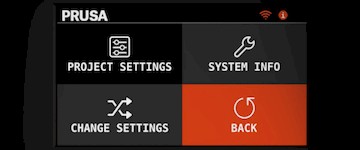 We will offer a wide range of connectivity options for the SL1. The whole device is controlled by a full-color LCD touchscreen and the print files can be uploaded via a USB flashdrive. However, there is also LAN and Wi-fi connectivity, which allows us to do some cool things apart from uploading print files – like enabling you to control the printer via a web browser.
We will offer a wide range of connectivity options for the SL1. The whole device is controlled by a full-color LCD touchscreen and the print files can be uploaded via a USB flashdrive. However, there is also LAN and Wi-fi connectivity, which allows us to do some cool things apart from uploading print files – like enabling you to control the printer via a web browser.
Everything is, of course, connected. Which means, that if the resin level sensor detects that you are running out of ‘fuel’, it will send a notification to your phone.
Another function that was inspired by the MK3 is the Power Panic mode. In short: in case of a power outage, the printer can save the last known position of the printing platform and once the power is restored, the machine can continue with the print job.
Vapor extraction
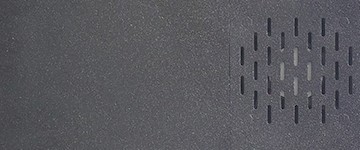 This may be a minor function for some users, but it’s important to mention it nevertheless: SL1 features a sophisticated cooling system and also a vapor extraction system. If you didn’t know, printing with SLA produces various fumes, so that’s also why the printer has a lid. However, a good airflow is also important, so the printer has a fan with a high-quality filter at the back of the machine.
This may be a minor function for some users, but it’s important to mention it nevertheless: SL1 features a sophisticated cooling system and also a vapor extraction system. If you didn’t know, printing with SLA produces various fumes, so that’s also why the printer has a lid. However, a good airflow is also important, so the printer has a fan with a high-quality filter at the back of the machine.
Actually, the part with the fan is removable, so you can e.g. mount a hose onto the printer to push the fumes out of a window.
Slice and dice!
There are many different slicing software solutions out there, some even go as far as being only cloud-based. That’s not our case! Our goal is to deliver an open-source printer, and that’s what we’re going to do! 🙂 We will expand the features of our current Slic3r PE and integrate SLA slicing directly into the existing software.
This brings a number of advantages, one of them is the simple fact that Slic3r PE has an incredible amount of features and new ones are appearing quite often, plus we have big plans how to improve and redesign our Slic3rPE.
Curing and washing machine
And we’re not done yet! There will be an optional accessory for the SL1. Basically, when you print something from resin, it is incredibly messy, because you have to rinse the model with isopropyl alcohol and ideally finish the curing. You can wear gloves and make a mess in your sink and then place the model outside in the sun to finish the curing.
Or better, you can get our 2-in-1 curing and washing machine (or CurWa, if you want ;-). Insert a tank with isopropyl alcohol, put a 3D printed object inside and the magnet-driven propeller will stir the IPA and wash the printed object. It uses standard food prep containers, so you can easily switch them out or replace. Once you remove the tank and place only the printed object inside the machine, it will start curing it with UV light.
BTW we are open for better naming suggestions before the machine goes on sale 😉
Availability and shipping
And that’s it! I hope that you learned everything you wanted to know about our new SLA 3D printer and I hope you like it. For us, it’s an expansion to a brand new territory and it’s very, very exciting! But I should once again point out that we don’t have to learn things from scratch! The team behind SL1 has over 5 years of experience in resin printer design and manufacturing, so we know what we’re doing! 🙂
We are launching pre-orders right now, and we’re throwing in a special discounted price for early adopters. You can pre-order a pre-assembled SL1 3D printer from our e-shop for 1.599 USD / 1.599 EUR (VAT incl.) and these printers will start shipping in December this year. Another option is to pre-order the kit (assembly required), which is priced at 1.299 USD /1.299 EUR (VAT incl.) and it will start shipping in January 2019. There are also special bundles of both printer variations with Curing and Washing Machine. You will save $200 / 200 € (VAT incl.) when you buy these bundles (assembled printer bundle or kit bundle) instead of buying both items separately.
We will, of course, also start selling resins, spare parts, FEP films, and other accessories later.
If you want to learn more about the SL1, check out the product page, our e-shop or ask us directly via e-mail. And you can also visit our booths at the World Maker Faire in New York (September, 22-23) and TCT Show in Birmingham (September, 25-27) – we have the SL1 with us. 🙂
Happy printing!
Jo Prusa

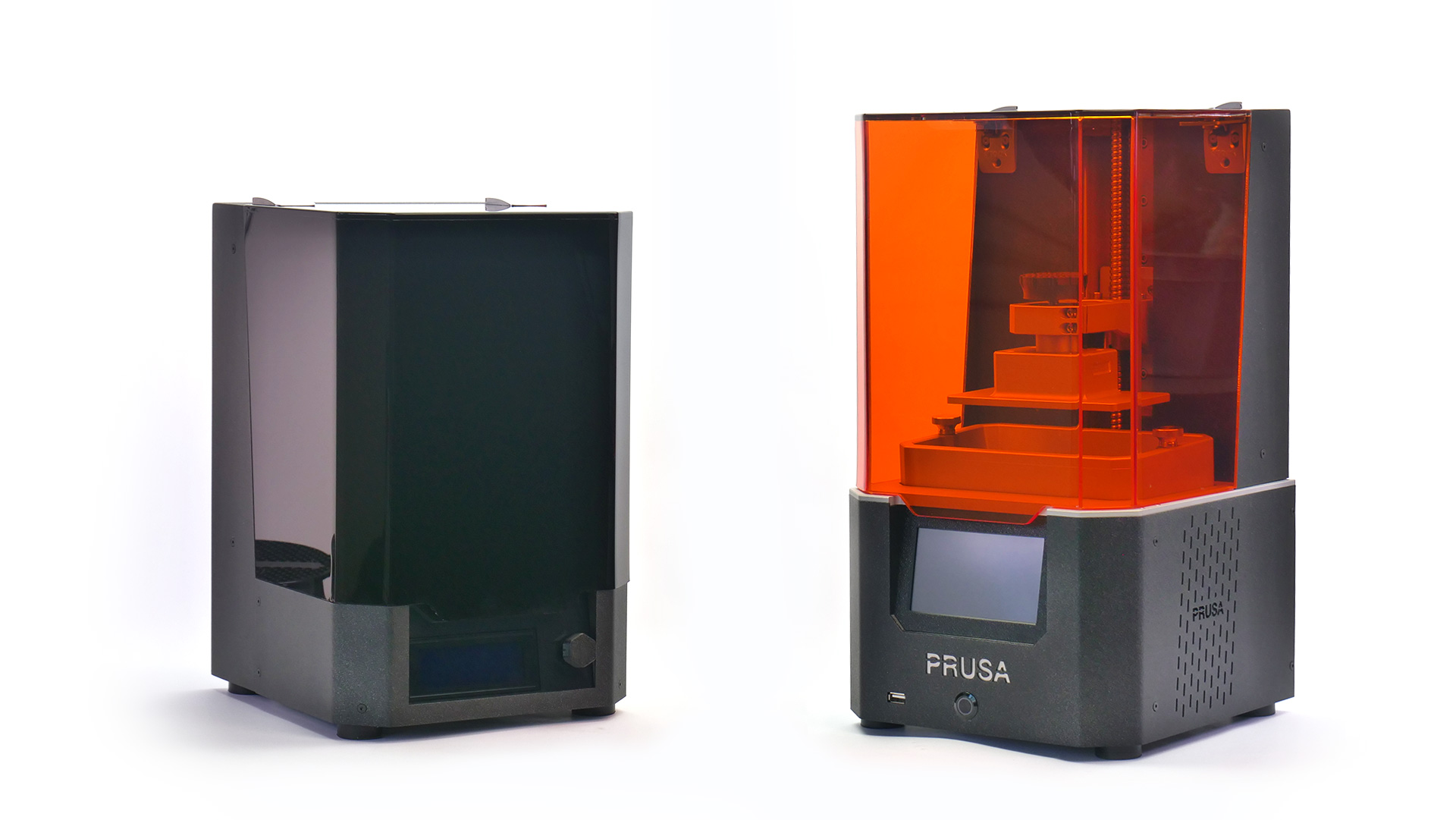

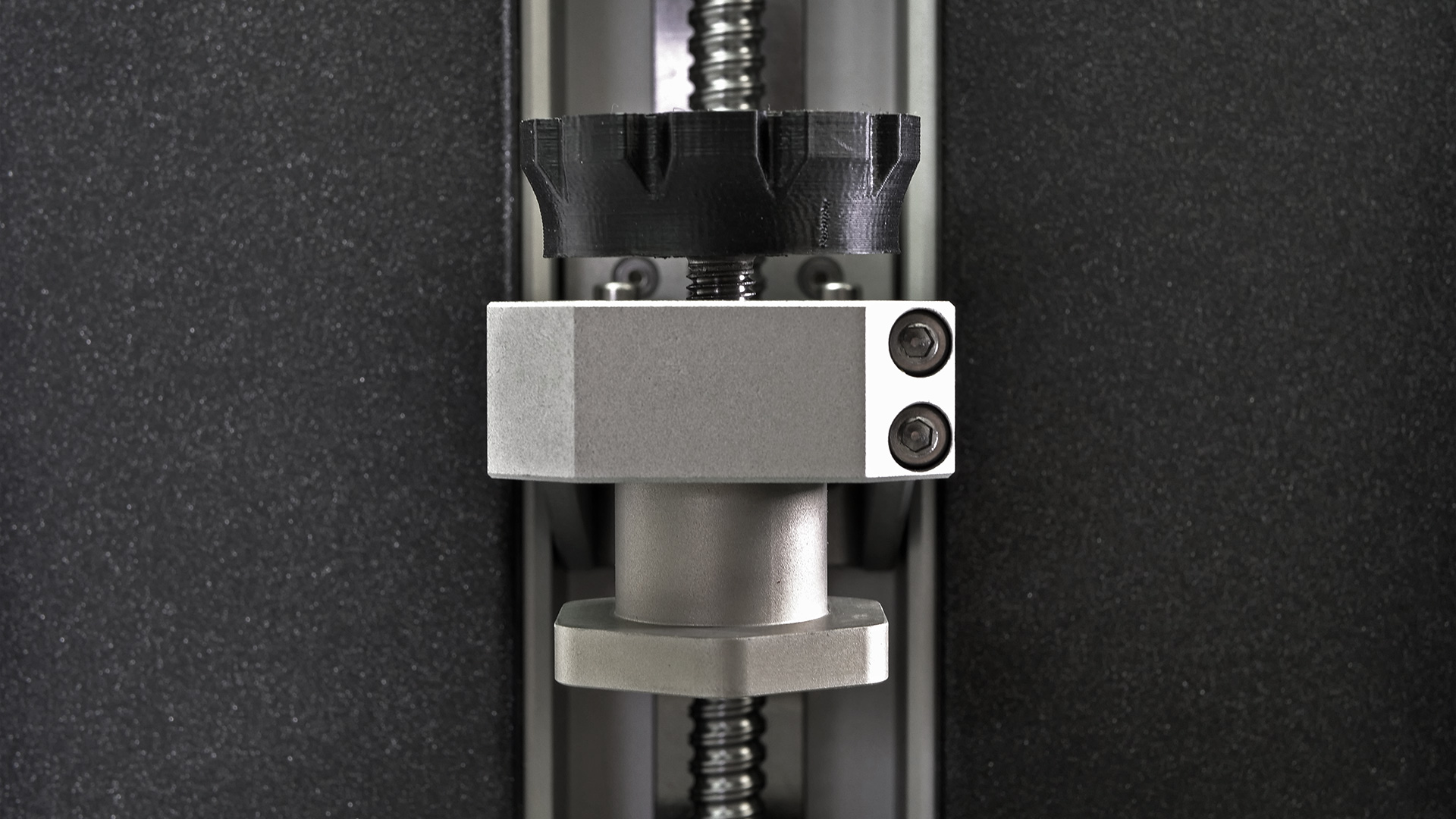

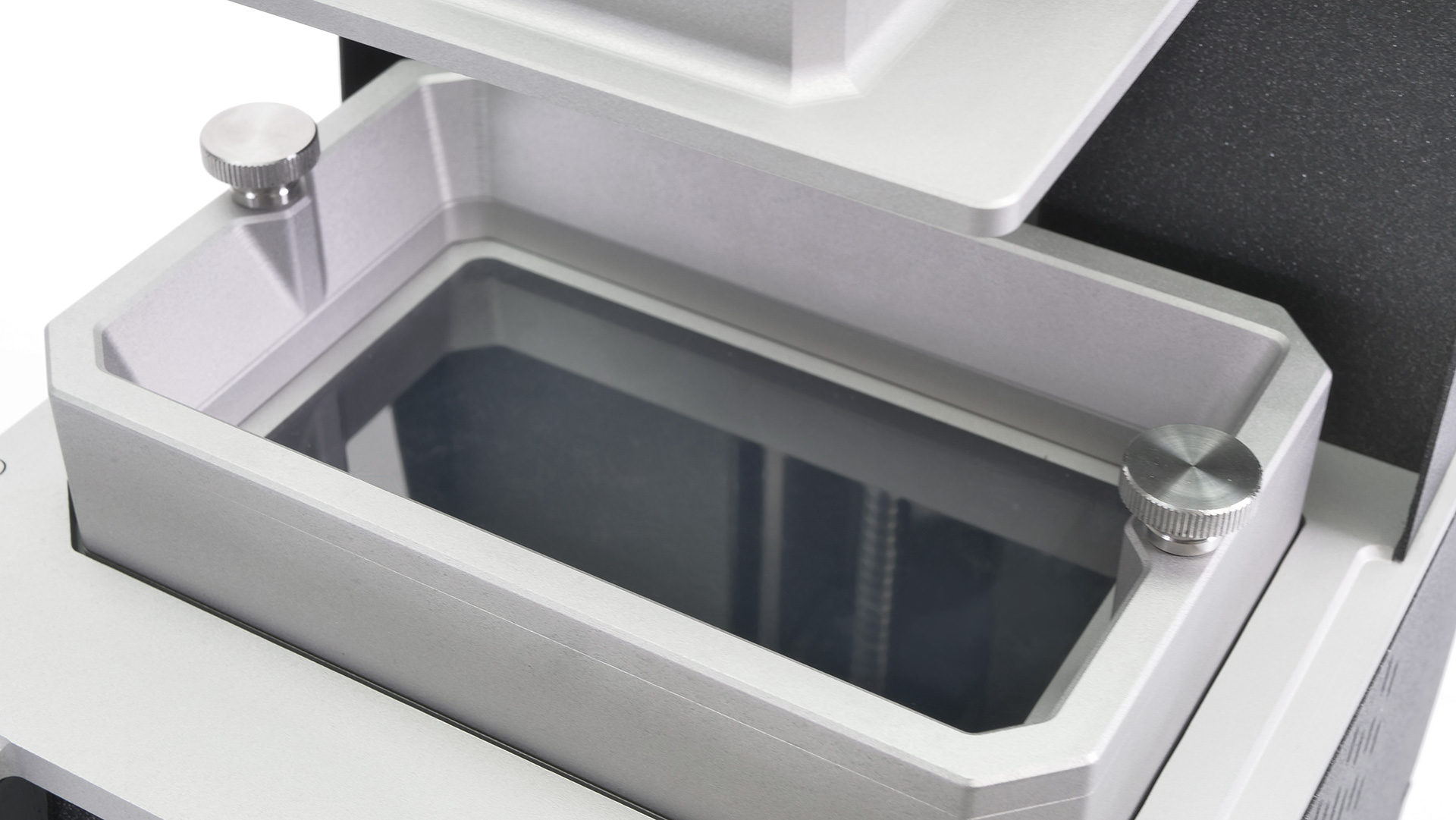


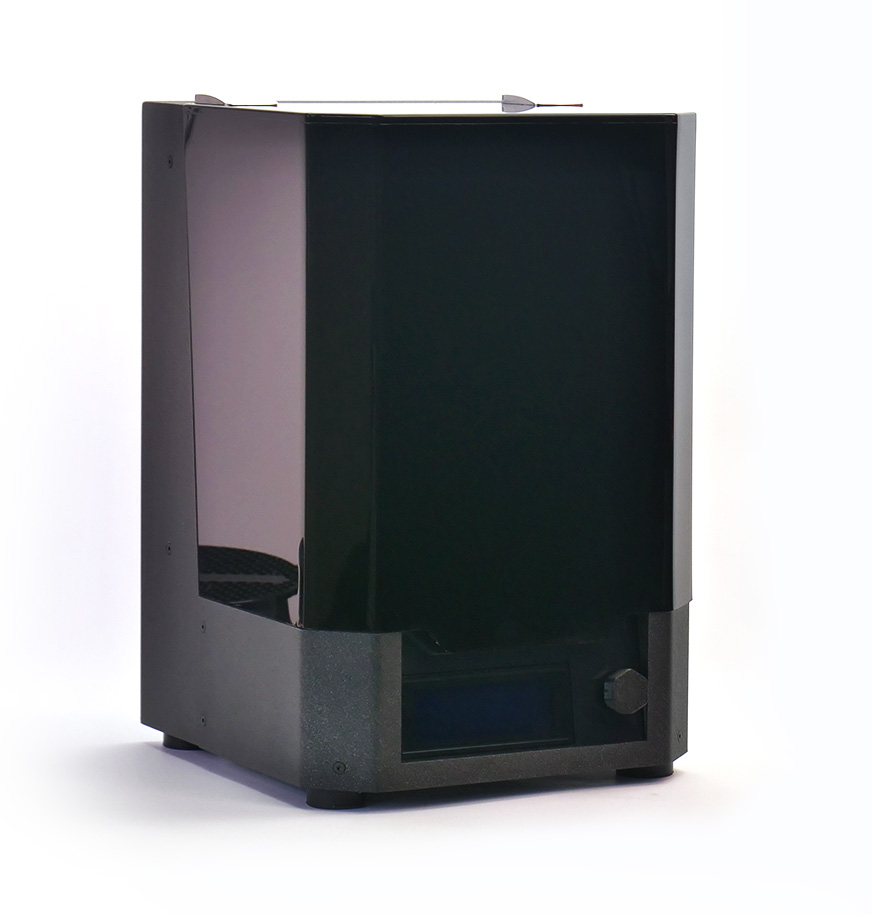
A discussion of the expected operating costs would be very helpful. I, as I expect is true for most hobbyists, have no experience with SLA.
What is the price for this machine?
Hi Vojislav, it depends whether it is a kit or assembled version, bundled or standalone. More info is on the eshop: https://shop.prusa3d.com/en/17-3d-printers
I think you should name the printer SLAV1
In case you don’t figure out all thre of my references, they are:
-SLA V1 (version 1…)
-SLAV 1 ( https://en.wikipedia.org/wiki/Slavs )
-Slave 1 – because Star Wars… and the machine is your “slave” ( https://en.wikipedia.org/wiki/List_of_Star_Wars_spacecraft#Slave_I )
Ok Prusa. Now you just need to add multimaterial to your Prusa SL1.
Ready? GO! LOL!
LCD technology and you call it SLA? :)))
Yes 🙂 MSLA to be precise (masked SLA).
“SLA is a form of 3D printing technology used for creating models, prototypes, patterns, and production parts in a layer by layer fashion using photopolymerization, a process by which light causes chains of molecules to link, forming polymers.
Great idea and I did pre-order one, but was it really necessary to make such negative comments on a competitor ? I dont think thats very professional..I do own said competitor and although it has several flaws, it is physically a rock solid machine, not flimsy at all.
Nice! But would be better to used the dev. hours in a better board for the mk3. And possibility to use normal dual extrusion..
Etc
Hi Erwin, on the SL1 works a different team. Devs are still working on the MK3 improving both firmware and hardware.
Excellent idea ! I was turning around sla/dlp printers for weeks for small robotic projects. I was quite attracted by the Form2 but at the same time really frightened by its price and the over-expensive formlabs resins. Great project M. Prusa ! However, the best would be to be able to provide a true hard engineering resin that could be as strong as the Formlabs grey pro, or their blue tough resin, so that people can make truly usable mechanisms and forms, and not only fragile figurines. By the way, the CurWa all in one is also a very good idea :), if its price is realistic, it will be success too.
I see a lot of comments on the printer features themselves but I see no tested resin mentioned here and how to import profiles for the different resin types. Anywhere where to read documentation about how to import resin profiles?
Hi Many, detailed info about resins will be published as soon as we finish all the tests. We want to make sure the printer is compatible with a variety of resins like the MK2S/MK3 is with the broad range of filaments. https://www.prusa3d.com/original-prusa-sl1/
Will there be future upgrade kits for the SLA printer as new deveopments are made in the same way as the MK3?
Yahoo Joseph! I want one.
Would love to beta test this!
Y’all wouldn’t be willing to take an arm or leg in trade for one of these would you? Of course I could just print a replacement after getting this awesome machine. 😀
Please make the build volume bigger before release. At least as large as Form 2.
1,599 USD / 1,599 EUR (inkl. TAX ) ??? Same Price !
Current 1.599 $ = 1363,09 € !!!
I order in $ ( For Europe )
…
The US price does not have the VAT included, the EU does, hence the same price despite different currencies.
Alcohol and sunburn – I’d call it “Mallorca”.
how about PruSLA ?
for my experience (G3D T1000 & Wanhao D7) software is almost as important than hardware. please add a nice & strong supports feature. an easy resin calibration. and “cut & assemble” too big objects would be cool. a bit pricey for me (because a already have 2 ^^’ ) but if quality and easy to use are there why not 🙂
…Now we just need a Prusa style SLS printer 😀 Looking forward!
when does beta testing start – I am game
Why is US the cheapest when manufacturing etc is in Europe? £150-200 premium for not being american?
I don’t seem to see anything on current compatible resin options
Hi Jason, the list of compatible resins will be released, we are still testing them. More information will be available at https://www.prusa3d.com/original-prusa-sl1/
Do you have a after sales service facility in Dubai, U.A.E?
Hi Nitin,
no, we have 24/7 support. You can contact us using email or live chat at shop.prusa3d.com
i like it how much for jakarta Price
give me detail this product a so on…
I just like the helpful info you supply to your articles.
I’ll bookmark your blog and take a look at once more right here frequently.
I’m rather certain I’ll learn many new stuff right here!
Good luck for the following!
pipeful (Sharron)
By the way, the ‘curwa’ or whatever its name, should absolutely integrate a thermostatic heater, for most professional resins need a high-power UV curing chamber for x minutes at x degrees Celsius. That’s the case for instance for the lqcreate strong x resin, which I found on the net, that needs, according to the users guide, 65°c (strong parts for engineering projects dedicated to open source dlp and sla printer). I don’t know this product, and there are certainly other brands that provide or will provide engineer resins like the formlabs ones, but the key for a good postprocessing is UV + heat. Without a heater the curwa will be useless for professionals.
We do have a heater in it! 🙂
Great, thanks! Can the temperature be adjusted, if yes in what range? You should give also these technical parameters in the e-shop and blog pages (I was not able to find something about it in your websites). One needs more knowledge before placing a pre-order 🙂
Here’s a name proposal: PRUSA 3D SLayer
Would love to have one of these…
as for the name…. PRUSA 3D SLayer
When can we expect source files for this printer to be published?
Or is it marked “open source” just for marketing?